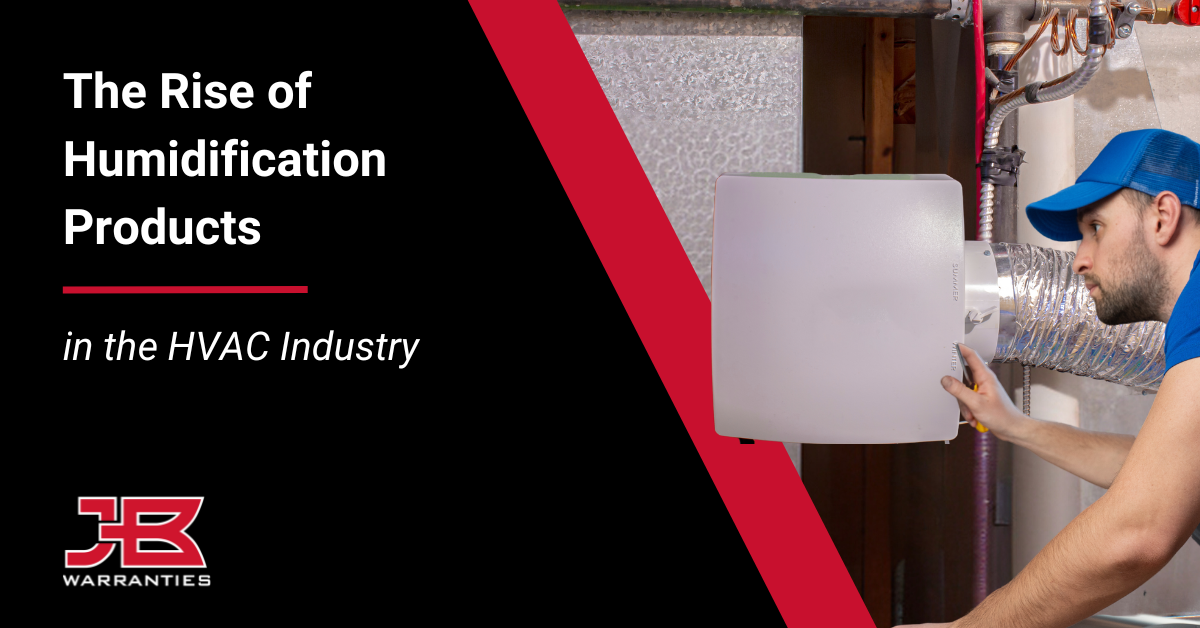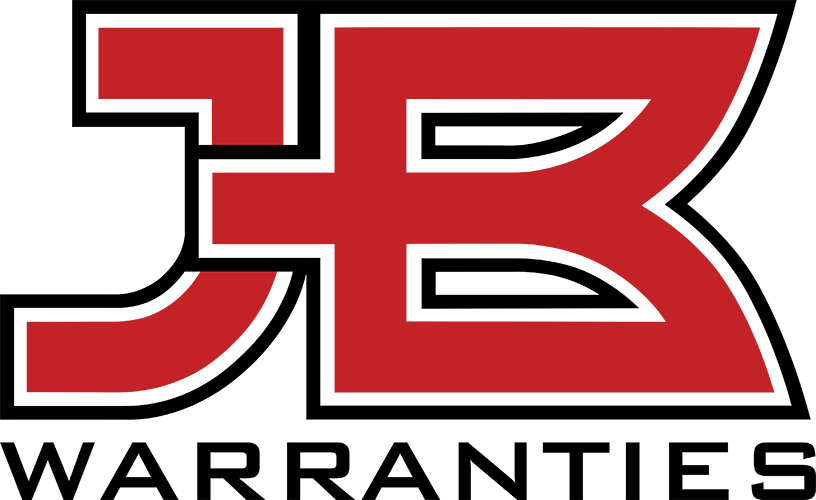
Millions of homeowners have leveraged the power of humidification products in HVAC to combat the myriad of negative impacts dry air has on not just their homes but, more importantly, their health. Recent years have witnessed a surging interest in humidification products, particularly due to their potential for combating ongoing COVID-19 and similar airborne pathogen-related concerns.
As a trade expert, it’s vital to educate yourself on growing consumer interests, such as humidifier products, and explore how offering similar services could benefit your operations. Keep reading to learn more about the rise of humidification products in HVAC, alongside the benefits and concerns of these systems and the top humification products currently found across the HVAC market.
Understanding the Rising Interest in the HVAC Humidification Market
The global humidifier market is expected to reach a value of $3.9 billion by 2028 at a compound annual growth rate of 9.4%. Rising interest in commercial and industrial-grade humification technology comes in part from stronger, more consistent societal concerns regarding the transmission of airborne pathogens, including COVID-19, influenza, and respiratory syncytial virus (RSV).
So, why humidification in HVAC to do the job? In a recent study from the Massachusetts Institute of Technology (MIT), researchers discovered that maintaining optimal humidity levels inside homes can lower the risk of infections and associated deaths. The study demonstrated that maintaining a relative indoor humidity of 40% to 60% helped reduce the stability of the COVID-19 virus, resulting in fewer infections and subsequent deaths when compared to spaces outside these humidity ranges.
With a stronger understanding of indoor humidity and how it impacts virus transmission, consumers are on the hunt for humidification products that can be used as part of their HVAC units to enhance in-home safety now more than ever. Thus, HVAC contractors must take the time to weigh their options when looking to expand their services and keep up with current consumer demands.
What Are the Proven Benefits of Humidification Products in HVAC?
I t’s no secret that recent events surrounding public health have given way to new humidification products. However, beyond reduced virus transmission, there are several other benefits that come with using humidification products in HVAC. The additional benefits of humidifier applications to consider when educating customers, including home and business owners, range from:
t’s no secret that recent events surrounding public health have given way to new humidification products. However, beyond reduced virus transmission, there are several other benefits that come with using humidification products in HVAC. The additional benefits of humidifier applications to consider when educating customers, including home and business owners, range from:
- Reducing health concerns. Maintaining optimal humidity levels helps reduce health concerns associated with dry air, including dry skin, sinus issues, worsening allergy symptoms, and fueling respiratory illnesses.
- Becoming more energy efficient. Increasing household humidity makes the air feel warmer at a lower temperature, which can help reduce heating costs and improve general household energy efficiency.
- Protecting the interior of homes and businesses. Eliminating dry indoor air with humidity control helps prevent the costly cracking, warping, and shrinking of wood home finishes and furnishings.
Across the board, HVAC humidification products can be used to enhance your customer's indoor air quality and support their day-to-day comfort. Even more, the savings that consumers can reap by enabling a more energy-efficient household— one that does not pose risks to their expensive wood finishes—allows both home and business owners to dedicate spending to other critical areas.
What Are Potential Humidification Concerns for Contractors and Customers?
When discussing the benefits of humidification products in HVAC, it can be easy to overlook the various risks associated with poor humidity control. As with anything in life, there’s such a thing as too much. Failing to maintain optimal indoor relative humidity percentages and drawing too much humidity inside a residence can quickly burden a home or business owner with a collection of risks.
For instance, once humidity levels go above and beyond the 40% to 60% safe range inside residences, customers increase their risk of excess moisture developing inside the home. Indoor spaces that hold too much moisture long-term face an increased risk of mold growth, unwanted mildew growth, increased dust-mite development, and the peeling and cracking of interior paint.
So, Which Customer Types are Ideal for HVAC Humidification Products?
To avoid the costly concerns associated with excessive humidity levels inside of a home or business, contractors must understand which customer types are a good fit for HVAC humidification products. For instance, customers located in extremely dry locations, such as Nevada, Arizona, and New Mexico, can greatly benefit from home humidification products yearlong.
Likewise, regions such as Colorado and Utah, which face varying drops in humidity levels during the winter months, would also benefit from home humidification product investments. However, there are areas of the country that do not experience such fluctuations in humidity. For example, customers in South Florida or Louisiana often face humid conditions year-round.
What Are the 3 Primary Types of Humidification Products in HVAC?
 When it comes to humidification products in HVAC, there are three types of whole-home humidifiers you need to know inside and out. Understanding the functionality of each option will help you better inform your customers about which options are the right for their residence or office space. Take a look at the top three humification products in HVAC to learn more.
When it comes to humidification products in HVAC, there are three types of whole-home humidifiers you need to know inside and out. Understanding the functionality of each option will help you better inform your customers about which options are the right for their residence or office space. Take a look at the top three humification products in HVAC to learn more.
1. Bypass Humidifiers
A bypass humidifier works by pulling warm air from the home’s heating ducts and transferring it through a water tray, making it a great choice for clients located in harsh, low-humidity winter climates. While traveling through the water tray, the warm air will collect moisture before being distributed back into the home, helping raise and maintain the home’s relative humidity. Bypass humidifiers can be installed directly on the return or supply plenum and will often require the use of a floor drain to ensure proper draining unless a drainless unit is purchased.
2. Fan-Powered Humidifiers
Fan-powered humidifiers, also known as powered flow-through systems, operate very similarly to bypass humidifiers, where warm airflow travels through a water tray to collect moisture. However, these systems instead use a fan to push air through the water tray, resulting in increased water evaporation and the production of far more daily humidity when compared to bypass units. With the small amount of electricity required to power the unit’s fan, these systems are also considered energy efficient and do not require a bypass duct, allowing for smaller space installations.
3. Steam Humidifiers
Similar to many small-scale portable humidifiers, whole-home steam humidifiers work by electrically boiling water to create humidity in the form of steam. Considered the purest form of humidity, humidification is initially produced inside the unit’s steam canister, where it’s then fed through a customer’s duct system via a dispersion tube. Steam humidifiers are also capable of dispersing humidity regardless of whether an HVAC unit is heating or cooling, making it an excellent choice for customers looking for year-round in-home humidification.
Protect Newly Installed HVAC Equipment with JB Warranties
From bypass humidifiers to steam humidifiers, humidification products in HVAC are making major waves for consumers seeking healthier homes and businesses. As you brush up on the latest insights on humidifier products, don’t forget to learn how home and business owners can protect the new systems you install. Visit JB Warranties online to view our warranty plans for contractors!
Nick Ahrens
National Account Manager






